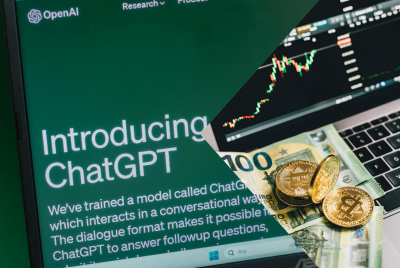Building AI from the Ground Up: How Westmar Consulting Helps Businesses Avoid the Pitfalls of AI Adoption
Boutique firm Westmar Consulting starts with policy, people and clear goals

Artificial intelligence (AI) is now embedded in the everyday conversations of modern businesses. From streamlining operations to unlocking new growth models, its potential is undeniable. Still, many organisations, especially small and mid-sized enterprises, find it challenging to adopt AI.
The headlines are split between runaway success stories and costly misfires, leaving leaders wondering: What makes the difference? Westmar Consulting, a boutique firm known for its holistic, people-first approach to digital transformation, believes the answer is in structure, strategy, and shared ownership.

Westmar acknowledges that many organisations know AI is critical to staying competitive. However, they don't know how or where to begin. 'The mistake is in the rush,' states Greg Heaslip, co-founder and principal at Westmar Consulting. Businesses often leap straight into development. They commission tools, onboard platforms, or hire contractors, hoping that AI will somehow fix inefficiencies.
However, as Westmar emphasises, AI isn't a plug-and-play solution. It's a systemic shift. Without a proper strategic foundation, companies will find themselves locked into misaligned tools, frustrated by failed pilot projects, or paralysed by internal resistance.
'AI can be greatly successful, but it needs to be introduced correctly,' Heaslip says. 'We've seen firsthand that most failures happen due to a lack of clarity at the outset. There are no defined goals, no policy frameworks, no organisational readiness, and no real understanding of how AI fits into the wider business context.'
This reactive approach creates chaos. When employees start using tools without official guidance, 'shadow AI' becomes a real risk. Staff might turn to unvetted platforms, uploading sensitive data or making business decisions with limited oversight.
These behaviours are signs of a leadership and structural vacuum. AI becomes a liability instead of an asset when it lacks clear boundaries, expectations, or proper education and training. Add to this the emotional complexity of change, and it's no surprise that many initiatives fail to generate value before they even begin.
Westmar's approach addresses this chaos. The company positions itself as a long-term partner, guiding businesses through the full lifecycle of AI adoption, from policy creation and education to implementation and ongoing support.
The company's model is also collaborative. It believes that AI transformation must be co-created with the people who will use it. 'AI isn't something done for the business. It's something done with the business,' Heaslip stresses. This distinction is critical.
By embedding employees in the learning and development process, Westmar helps clients build internal capabilities rather than dependency. AI is viewed as a cultural shift, where sustainable success stems from grassroots engagement and incremental improvement.
Westmar's process begins with strategy, something many companies overlook. Before anyone writes a line of code or selects a tool, Westmar works with leadership to craft a company-wide AI policy. This step is underestimated but crucial. After all, a clear policy defines what tools are permitted, how data should be handled, what ethical standards must be upheld, and what the company's overall AI posture should be. It also sends a signal throughout the organisation that AI is being taken seriously and responsibly.
With this groundwork in place, Westmar moves into a full-scale audit. It analyses everything from technical infrastructure to data systems and business workflows. This diagnostic stage reveals where opportunities lie and shows any gaps that must be addressed before meaningful implementation can occur.
Education follows. Instead of overwhelming teams with abstract theory, Westmar focuses on practical, context-specific learning. It begins with accessible online modules to build a basic understanding, followed by personalised training tailored to each team's unique functions. This phased approach helps ensure that learning sticks, confidence grows, and curiosity is encouraged.
Most importantly, it encourages employees to begin identifying their use cases. This process creates the conditions for a bottom-up innovation engine within the business.
Once teams are educated and aligned, Westmar begins co-developing AI solutions. Depending on the size and technical maturity of the organisation, this might mean implementing pre-built tools for HR or marketing automation.
It could also involve building custom machine learning models using proprietary business data. 'The guiding principle is still the same. Fit the solution to the business, not the other way around,' Heaslip remarks.
The collaboration continues well beyond implementation. Westmar Consulting provides long-term support and management, functioning similarly to an outsourced AI department that continuously optimises, updates, and evolves systems alongside its clients.
Ultimately, through its structured methodology and values-driven approach, Westmar stands out as a trusted guide for businesses navigating the complexities of AI. Its work leads to a more capable, more confident organisation.
Heaslip further advises, 'Start small. Pick projects with low risk and high return, and accept that some things won't work right away.' This mindset eliminates the fear of failure and reframes AI adoption as an iterative, human-centred process. It also helps companies resist the temptation to chase hype and instead focus on building durable capabilities that support real business goals.
© Copyright IBTimes 2025. All rights reserved.





















